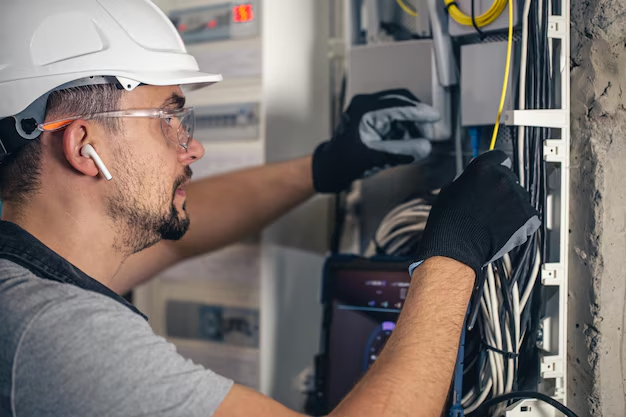Adding Freon to Your Refrigerator: A Comprehensive Guide
Is your refrigerator suddenly not as cool as it used to be? Before you rush to replace it, one potential issue could be low Freon levels, which may hinder its cooling efficiency. While adding Freon to a refrigerator is not as common today due to environmental concerns and modern appliance designs, understanding the process can be both helpful and insightful. This guide will walk you through everything you need to know about how to safely add Freon to your refrigerator.
Understanding Freon and Refrigeration
Refrigerators rely on a refrigerant to cool the interior, and Freon was commonly used for this purpose. This compound helps transfer heat from inside the refrigerator to the outside.
Why Freon Levels Matter
Freon circulates within the refrigerator system, absorbing heat and releasing it outside. When Freon levels are low, the refrigerator can't maintain the necessary cool temperatures, leading to various issues such as:
- Spoiled food
- Higher energy bills
- Potential damage to the refrigerator
Are You Sure You Need Freon?
Before adding Freon, it's essential to determine if this is the root of the problem. Here are some signs that your refrigerator might be low on Freon:
Poor Cooling: The most obvious sign. If your fridge isn't keeping food cool, low Freon levels could be to blame.
Compressor Running Constantly: A compressor that doesn't cycle off could indicate insufficient refrigerant levels.
Hissing or Gurgling Sounds: Unusual noises can be a sign of Freon leaks.
However, it's worth noting that modern refrigerators often use alternative refrigerants due to environmental regulations. As such, make sure to consult your refrigerator's manual to know exactly which refrigerant is used.
Safety First: Preparing to Add Freon
Before starting, ensure you are equipped with the necessary knowledge and tools. Here’s what you need:
- Refrigerant Canister: Make sure it's compatible with your fridge model and environmentally approved.
- Refrigerant Gauge: Helps measure the current refrigerant levels.
- Safety Gear: Gloves and goggles to protect against refrigerant exposure.
- Screwdrivers: For accessing necessary components.
🛑 Note: Freon is a dangerous chemical. Inhalation or skin contact can result in severe health effects. If unsure, it’s highly recommended to contact a professional.
Step-by-Step Guide to Adding Freon
If you're determined to proceed, here’s a simple yet detailed walkthrough:
1. Unplug the Refrigerator
Safety first—always unplug your appliance before starting any repair work.
2. Locate the Freon Lines
- Generally located at the back or bottom of the fridge.
- Find the service valve where you'll attach the refrigerant gauge.
3. Connect the Refrigerant Gauge
- Attach the gauge to the service valve to assess current Freon levels.
- Low pressure indicates the need for Freon.
4. Attach the Freon Canister
- Connect it to the valve on the gauge, ensuring a secure connection to prevent leaks.
5. Open the Valve
- Slowly open the valve on the canister to allow Freon to flow into the system.
- Monitor the gauge closely to ensure optimal levels, avoiding overcharging.
6. Seal the System
- Once the appropriate Freon level is reached, close the valve and disconnect everything.
- Ensure all connections are properly sealed to prevent leaks.
7. Plug In and Test
- Plug your refrigerator back in and observe its cooling performance over the next few hours.
Addressing Environmental Concerns
Due to Freon's negative environmental impacts, ensure you handle and dispose of any refrigerants responsibly. Regulations may require specific handling of refrigerants, so let's delve into some eco-friendly tips:
- Recycling: Return empty canisters to designated recycling centers.
- Leak Prevention: Regularly maintain and inspect your refrigerator to prevent leaks, conserving both refrigerants and energy.
- Alternative Refrigerants: Consider modern refrigerants approved by environmental bodies. Many newer models use eco-friendly alternatives that perform just as efficiently.
When to Call a Professional
While DIY approaches can be cost-effective, professional help is recommended if:
- You're unfamiliar with refrigeration systems.
- You suspect a significant leak.
- Precise tools and gauges aren't available to you.
Professionals have specialized equipment and experience, ensuring the task is done safely and correctly, often saving more money in the long run.
Summary of Key Steps and Tips 📝
Here’s a quick recap to guide your Freon addition project:
- Identify Need: Check for low cooling, noisy compressors, or unusual sounds.
- Safety Gear: Always wear gloves and goggles.
- Tools & Equipment: Use a refrigerant gauge and compatible Freon canister.
- Process Steps:
- Unplug refrigerator 🛑
- Locate service valve 🔍
- Connect refrigerant gauge 🔧
- Attach Freon canister
- Open valve slowly ⏳
- Monitor levels and seal system
- Environmental Care: Dispose of refrigerants per local regulations and consider eco-friendly alternatives.
Closing Insight
Adding Freon to a refrigerator might seem daunting, but with proper knowledge and care, it can become a manageable home maintenance task. However, always prioritize safety and environmental protection. If in doubt, reaching out to a certified technician is advisable to ensure everything is handled correctly. Remember, proper maintenance extends the life of your appliance and can lead to significant energy savings. Happy cooling!
